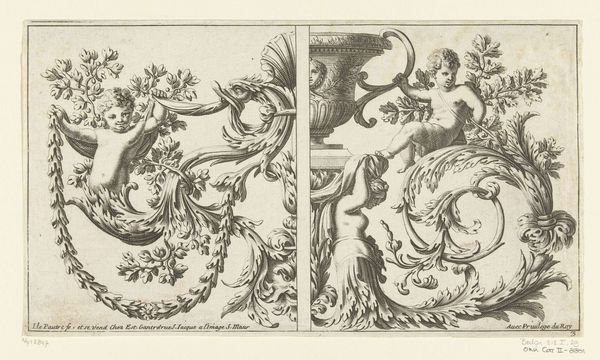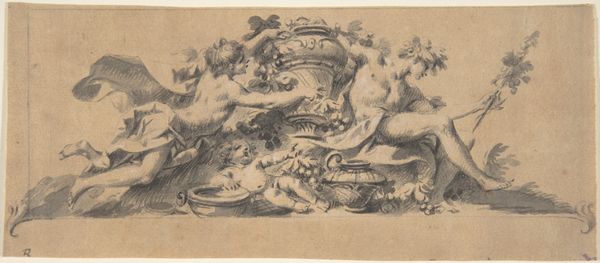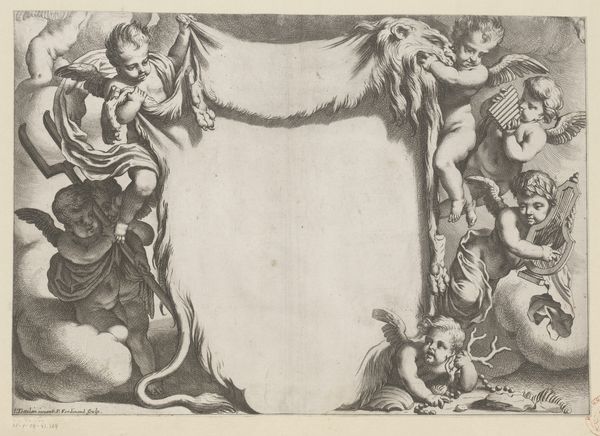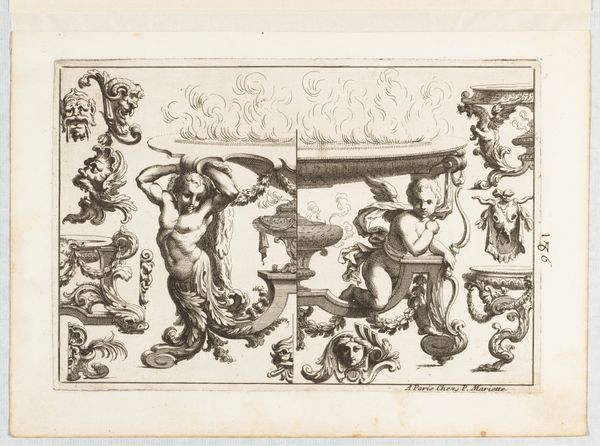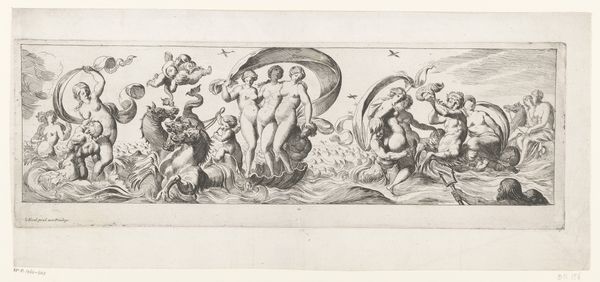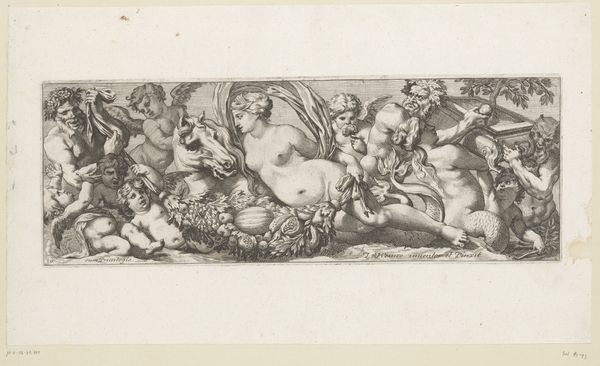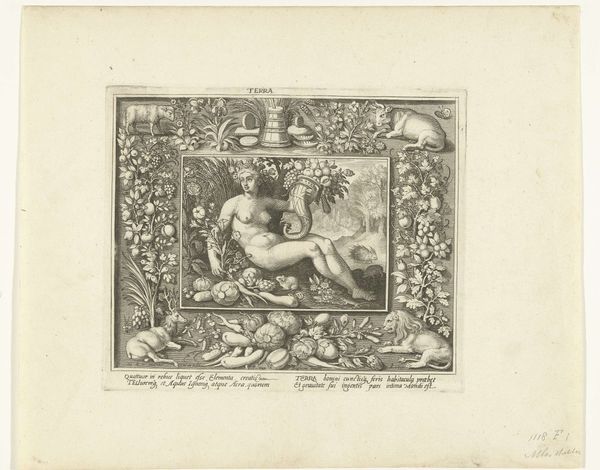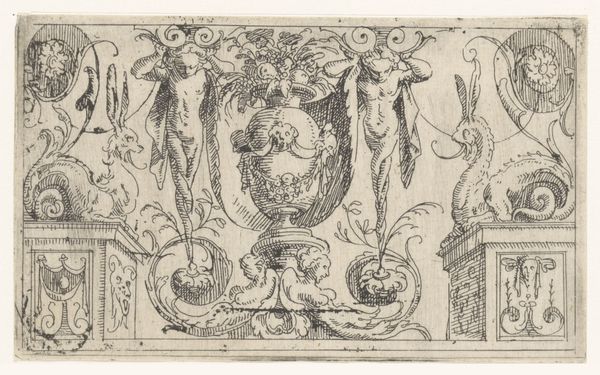
Deel van fries op schouw in Vroedschapskamer van het Stadhuis op de Dam 1663
0:00
0:00
hubertquellinus
Rijksmuseum
drawing, relief, ink
#
drawing
#
baroque
#
pen sketch
#
pencil sketch
#
relief
#
figuration
#
ink
Dimensions: height 111 mm, width 395 mm
Copyright: Rijks Museum: Open Domain
Hubert Quellinus created this relief frieze for the Vroedschapskamer in the Stadhuis op de Dam. Look closely and you will see that cherubic figures, instruments, and produce are the dominant symbols. In this decorative panel, winged putti symbolize joy and the arts, while the woman with the cornucopia on the right is likely an allegory of abundance and prosperity. The dove often represents peace and harmony, evoking a sense of divine blessing and natural bounty that any city council would want to associate itself with. Now, let's follow the meandering path of these symbols through history. The cornucopia, for instance, overflows with its promise from ancient Greek art to Roman sculpture. It resurfaces during the Renaissance, always as a symbol of wealth and plenty. These motifs possess a unique power to evoke collective memories and shared cultural values. The recurring use of these images isn't accidental; it's a deeply ingrained emotional need for reassurance and continuity. The image resonates as a powerful expression of hope, evoking subconscious feelings of well-being and security across centuries. The artist taps into a primal desire for prosperity and harmony, a psychological drive deeply embedded in the human psyche. In its non-linear progression, the cornucopia and other allegorical figures resurface and evolve, speaking to enduring human aspirations.
Comments
No comments
Be the first to comment and join the conversation on the ultimate creative platform.
